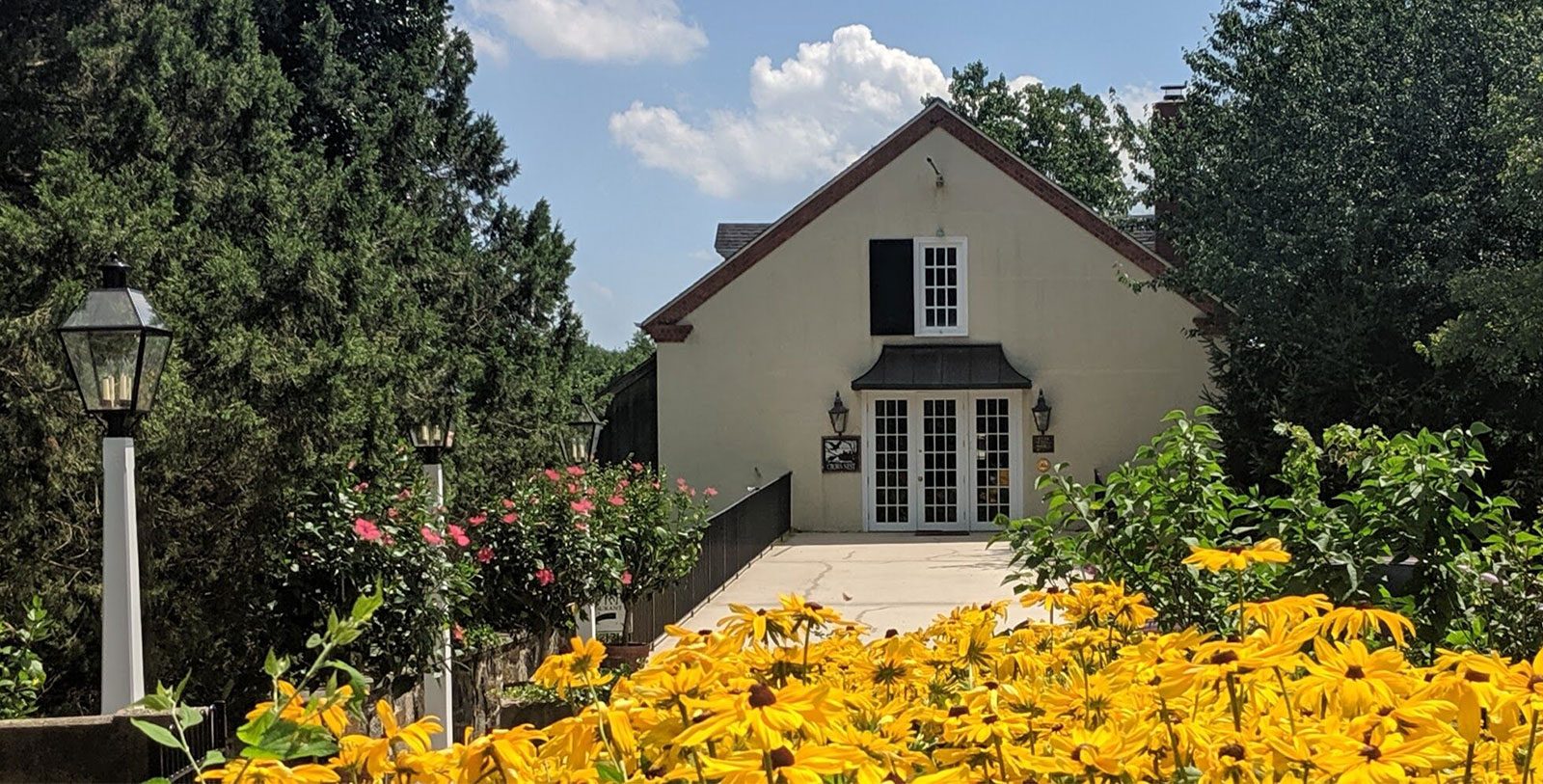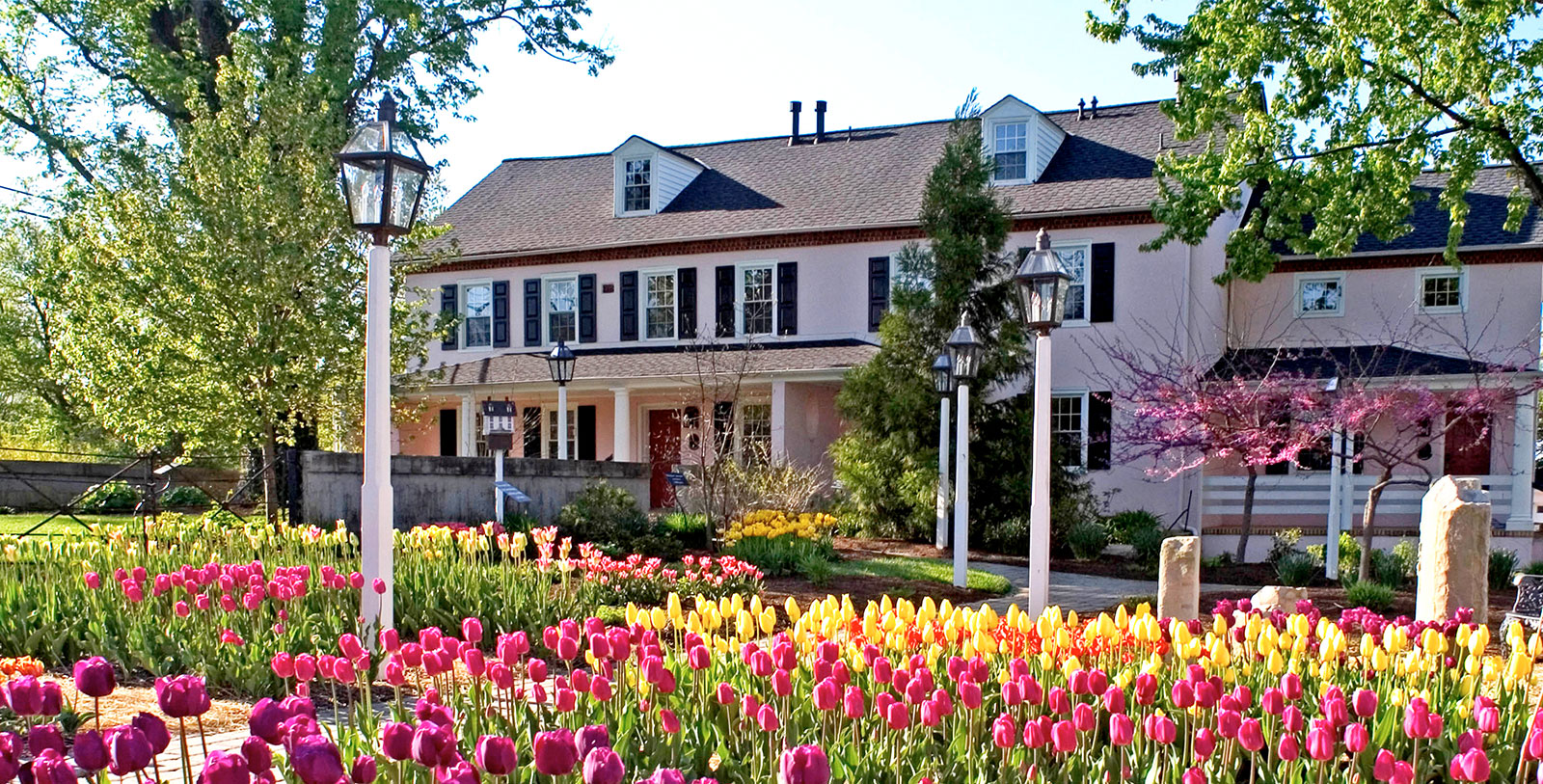Receive for Free - Discover & Explore eNewsletter monthly with advance notice of special offers, packages, and insider savings from 10% - 30% off Best Available Rates at selected hotels.
history
Discover the Inn at Montchanin Village, a lovely restored 19th-century hamlet, that was once home to laborers of the nearby duPont Gunpowder mill.
The Inn at Montchanin Village, a member of Historic Hotels of America since 1999, dates back to 1799.
VIEW TIMELINEListed on the U.S. National Register of Historic Places, The Inn at Montchanin Village is among the most historic destinations in the State of Delaware. This fantastic secluded retreat is actually composed of 11 amazing historical structures, with the first dating as far back as 1799. Every single structure that now forms The Inn at Montchanin Village were once private residences owned by individual families for centuries. The Village of Montchanin itself only consists of around two dozen structures, most of which contribute to the Montchanin Historic District. Formally organized in the early 19th, the core of the hamlet is a small triangular area where the original community of farmers first settled. Given the irregularity of the local topography, the layout of the earliest homes were established upon an asymmetrical street grid. As such, a wealth of winding, cozy pathways soon twisted throughout Montchanin, giving it the unique, tranquil appearance that it possesses today. But while personal homes comprised the majority of the structures within the heart of the village, a few businesses were also present in Montchanin, too. Among the small storefronts active at the time was a blacksmiths shop, which remained in operation well into the 20th century. A couple of barns resided just beyond the town limits, as did a massive homestead that was later folded into the community during the mid-1800s.
Montchanin largely endured as a pastoral settlement until the arrival of the Northern Railroad in 1869. The village expanded due to the rise in commercial and leisure travel that the railroads introduced, specifically near the intersection of Rockland Road and Delaware Route 100. An auxiliary complex that serviced the trains subsequently opened up, which included such facilities like magazines, warehouses, and a coal yard. But the central anchor of the village was a stick-style rail depot that the Northern Railroad developed in 1889. Due to its immense popularity, local developers even constructed a carriage house in the same style just in front of the station’s entrance. Travel along the local railroads remained strong well into the following century. President Franklin Delano Roosevelt even stopped by Montchanin Station as he journeyed north from Washington to watch his son, Franklin Delano Roosevelt, Jr., marry Ethel du Pont in Wilmington. Many travelers from Wilmington and Philadelphia would often pass through the village, as well, inspired by its verdant enclosures and rustic farmhouses. Interest with Montchanin persisted throughout the 20th century, inspiring hoteliers Missy and Dan Lickle to open a secluded holiday retreat in its center. In 1996, they specifically converted around a dozen of those buildings into temporary lodgings, which created the The Inn at Montchanin Village.
The history of The Inn at Montchanin Village—as well as the surrounding community—is intimately connected to that of the prominent du Pont family. Its ancestral patriarch, Éleuthère Irénée du Pont, had arrived in the United States at the height of the French Revolution. Using machinery that he brought from France, Éleuthère founded a company called the “Eleutherian Mills” a few miles north of Montchanin along Brandywine Creek. It was soon referred to as the “E. I. du Pont de Nemours and Company” and specialized in producing military-grade gunpowder. The business quickly became the largest supplier of gunpowder in the United States, providing half the amount used by Union forces in the American Civil War. Hundreds of employees worked at the complex by mid-century, with several dozen living within Montchanin Village. The rise in railroad traffic to the town was greatly influenced by the E. I. du Pont de Nemours and Company, as well, which ferried its goods from Montchanin Station. The village itself was even formally called “Montchanin” in honor of one of Anne Alexandrine de Montchanin—the mother of Éleuthère Irénée du Pont. The du Ponts became incredibly wealthy as a result of their company’s success, using their wealth to purchase several hundred acres of land to create a massive personal estate. Known as Winterthur, much of the boundaries of present-day Montchanin were actually a part of the estate until the 20th century. Today, the E. I. du Pont de Nemours and Company is world’s largest chemical manufacturing company, having merged with Dow Chemical in 2017.
-
About the Location +
The village of Montchanin is located in New Castle County, Delaware, specifically residing within an area known as the “Christiana Hundred.” It lies six miles to the north of the City of Wilmington and straddles the border with Pennsylvania. The greatest cultural attraction near the settlement is the Winterthur Museum, Garden, and Library, which possess one of the most important collections of American domestic artifacts in the United States. Yet, this renowned cultural institution originally served as a sprawling country estate for the powerful du Pont family. Evelina Gabrielle du Point—the daughter of Éleuthère Irénée du Pont—founded the estate in 1837 with her husband, James Antoine Bidermann. They specifically purchased some 450 acres along a tributary of the Brandywine Creek known as “Wilson Run.” The couple then began constructing the first iteration of the Winterthur manor some two years later. Named after the Swiss village from which James hailed, Winterthur presided over fertile farm land, a dense forest, and a marvelous sunken garden. It remained under the care of the Bidermanns until their son, James I. Bidermann, sold it to his uncle, Henry du Pont, in 1866.
Also a direct descendant of Éleuthère Irénée du Pont, Henry was a graduate of West Point who later became the head of the E. I. du Pont de Nemours and Company around the time of the American Civil War. Henry du Pont continued adding land onto estate during his tenure as owner, growing it to the size of 1,100 acres! The southernmost reaches of the grounds even encompassed a majority of present-day Montchanin. An avid farmer, Henry du Pont used the newly acquired land to grow a diverse variety of different crops. Yet, historians today believe that Henry never lived at Winterthur. Instead, his own son, Henry Algernon du Pont, made it his residence in 1875. It was under Henry Algernon du Pont’s watch that the size of the Winterthur manor doubled in size, as it experienced several renovations throughout the height of the Gilded Age. He also continued the land acquisition practices of his father, expanding the boundaries of the estate by another 1,300 acres by the end of the Roaring Twenties. Henry Algernon even expanded the now-famous Winterthur Gardens, developing such attractions within the location like the March Bank, the Pinetum, and the Azalea Woods.
When his son Henry Francis du Pont inherited the entire estate 1927, the latter almost immediately began to transform it into a museum dedicated to preserving American decorative art. Unlike his ancestors, Henry Francis had long held a passion for antique woodwork and spent years collecting such objects across the eastern seaboard. To house his priceless artifacts, Henry Francis du Pont constructed a new massive wing of special guestrooms at Winterthur. Yet, the size of the collection only continued to grow to the point where it nearly took over the entire house. Then, in 1930, Henry Francis created a non-profit organization to govern his nascent cultural institution. It debuted later that year as the “Henry Francis du Pont Winterthur Museum and Gardens” to great acclaim. Henry Francis du Pont had hoped the museum—and its attending library—would pay tribute to the grand legacy of early American craftsmanship. Over time, the size of the collection grew to encompass tens of thousands of objects that chronicled everything from colonial textiles to Federal-era furniture.
But Henry Francis also opened the family’s sunken garden complex to the world for the first time in the 1950s, offering private tours to those who were interested. He also presided over the final expansion of the gardens to cover some 60 acres, providing a striking colorful contrast to the stark hues of the manor. A series of new exhibits debuted within the gardens that highlighted every single type of tree, shrub, and flower capable of growing in Delaware. Around the same time, Henry Francis du Pont opened the remaining portions of the mansion to house a formal office space for the museum’s staff, as well as an educational center for visiting school children. When he finally died in 1969, the entire estate fell under the stewardship of the non-profit that governed its daily activities. The organization opened the gardens fully for public viewing and established formal business practices for the museum to follow. And per the direction of Henry Francis du Pont’s will, it also gave away more than half of the grounds to outside cultural groups like the Delaware Museum of Natural History and the Methodist Country House. Montchanin also received large quantities of the former estate for use within its own community. Now listed on the U.S. National Register of Historic Places, Winterthur is one of the most prestigious cultural destinations throughout the entire United States.
-
About the Architecture +
Since The Inn at Montchanin Village is currently comprised of nearly a dozen former residential structures, they all showcase various architectural styles. Even though most of the buildings appeared gradually over the course of the 19th century, their architectural appearance can best be summarized as “Victorian.” The same is even true for the inn’s earliest structures, for they have undergone several renovations over the span of the 1800s. Nevertheless, the design aesthetics present across the complex represent the broader architectural trends that affected Montchanin Village throughout its history. Amazingly, the architecture still appears the same as it did when it first came into being some three centuries ago. Few other hamlets of it kinds managed to endure the test of time, with many of their buildings either demolished or absorbed into much larger towns. According to the U.S. Department of Interior, those buildings are:
- “for the most part, constructed of local materials with stone, stucco, and wood…The important architectural details which are found primarily on porches, window and door openings, cornices and eaves have been retained and preserved.”
Despite the fact that some modern residents have covered portions of the surrounding cottages with siding, the structures still possess a remarkable degree of architectural authenticity. The same can be said for the buildings within the former railroad complex. While trains continue to access the historic Montchanin Station, a vast majority of the warehouses and magazines have been readapted for contemporary commercial use. Nevertheless, those locations maintain their common Victorian ambiance and serve as a reminder of the village’s Gilded Age economic activities. Even the railroad station retained its original appearance, which its architects originally designed to mirror the historic toll roads that once populated in the area. It is just one of the few remaining railroad stations constructed at the time that is still in operation today. It is this pristine level of architectural integrity that has allowed Montchanin to function as a time capsule that exemplifies the regional design principles of northern Delaware. Given that so few Victorian-era hamlets exist today, Montchanin’s undisturbed historical character is all the more impressive.































